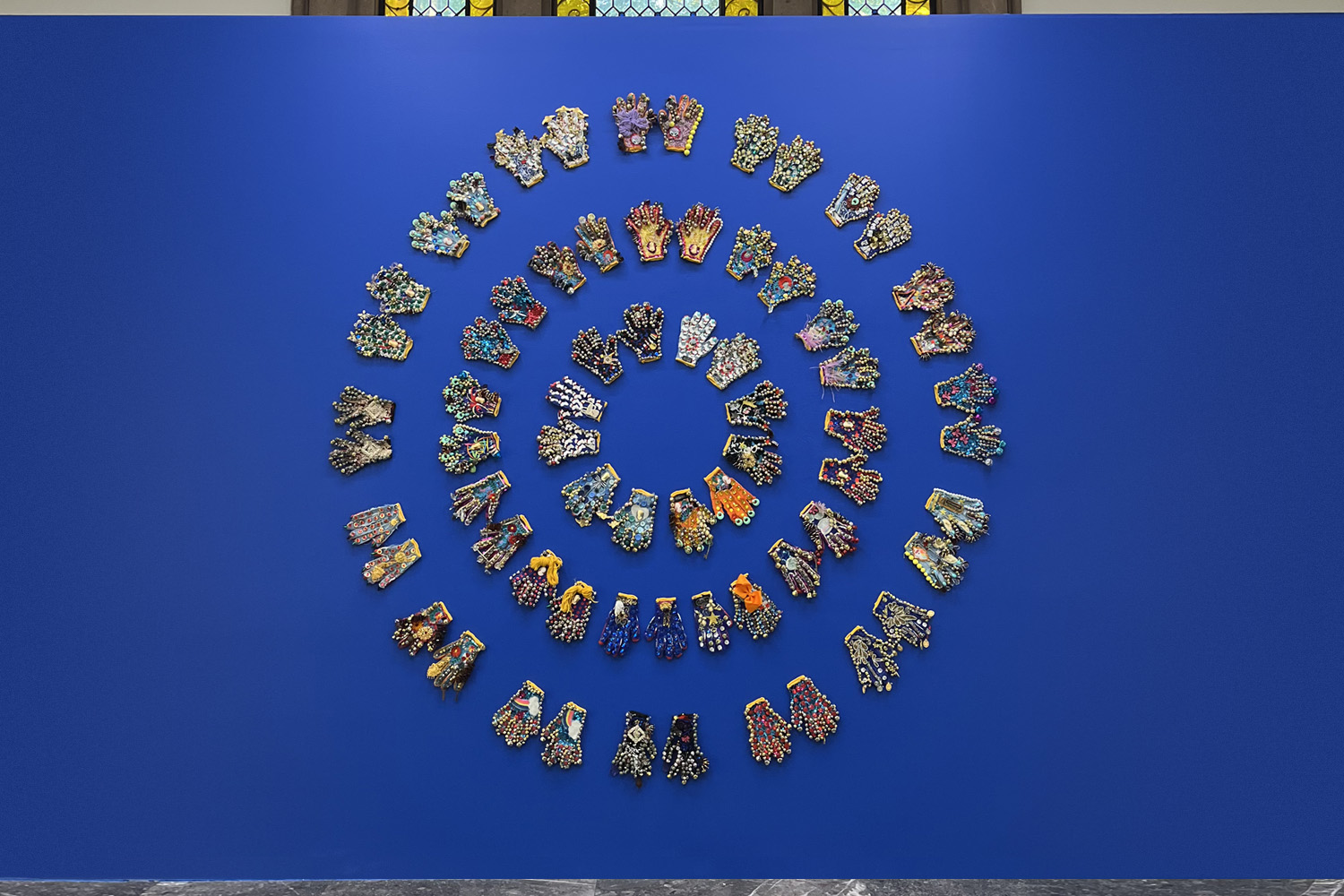
Raúl de Nieves
Entre las manos del tiempo
Exhibition
-> Feb 6 2024 – Mar 23 2024
Morán Morán presents Raúl de Nieves's solo exhibition titled Entre las manos del tiempo, featuring a suite of new works.
This marks the artist’s first show at the gallery and his first solo presentation in Mexico City. De Nieves is a profoundly interdisciplinary artist whose material output is marked by the ritual performativity of everyday life and the foundational influence of one’s community. His practice is filled with references to the dazzling imagery of his Michoacán upbringing, as well as the joy and revelry of club and queer culture in New York City, where he now lives. All of the work is syncretized in a baroque yet fiercely contemporary visual language that takes from religious iconography and mystical narratives to elaborate on the distinctive and ever-twisting paths of identity. For this occasion, his process was also deeply affected by the sensorial cacophony of Mexico City, especially the city’s downtown marketplace, an experience overflowing with all sorts of textures, colors, materials, sounds, and sights.
Entre las manos del tiempo presents a group of sculptural works circling the idea of standing before a portal – a timeless, transitional, and transcendental space, situated right beyond the past where the new has yet to arrive. The pieces themselves reflect materially on this idea of a suspended time, they evince a labor-intensive, meditative exercise, reflective of the artist’s devotion to constant adaptation and the critical cyclicality of building one’s own ways of being. There is belief in the resilience and significance of one’s own traditions, but also in the acceptance of change and openness to fluctuation, newness, and difference.
De Nieves’ works embody potentiality – they have humble but ever glittery origins, made of quotidian materials like nylon string, plastic beads, and polystyrene body parts. They are put together from shreds of previously fashionable clothing to become something new altogether: the laboring hands that delineate a jingly mandala in Treinta y tres segundos de compasión; the bejeweled body of an amphibious child in Los hilos de la vida; the costumes of a performance becoming ritualistic relics revered on a wall in the series La piel de la celebración; or yarn that converts from a gate to a face and then a map through a continuous metamorphosis in the piece El pasaje.
In their ornamental accumulation, these pieces represent a celebratory skin, an overlapping of times, places, and experiences that give shape to a tentative, impermanent, adventurous presence.
Their representation of constant transformation evokes Xipe Totec, the Central-Mexican deity of life-death-rebirth and renewal. An equally dark and auspicious god, Xipe Totec, which means “the flayed one,” wore his own skin as a suit in a representation of the husk of the corn being removed before becoming nourishment, and also representing the wise serpent continuously shedding its skin. As de Nieves recognizes, a serpent can entice fear in most, but it is also a powerful symbol of knowledge – two concepts that tend to circle each other in our cycles of self-configuration
— Morán Morán